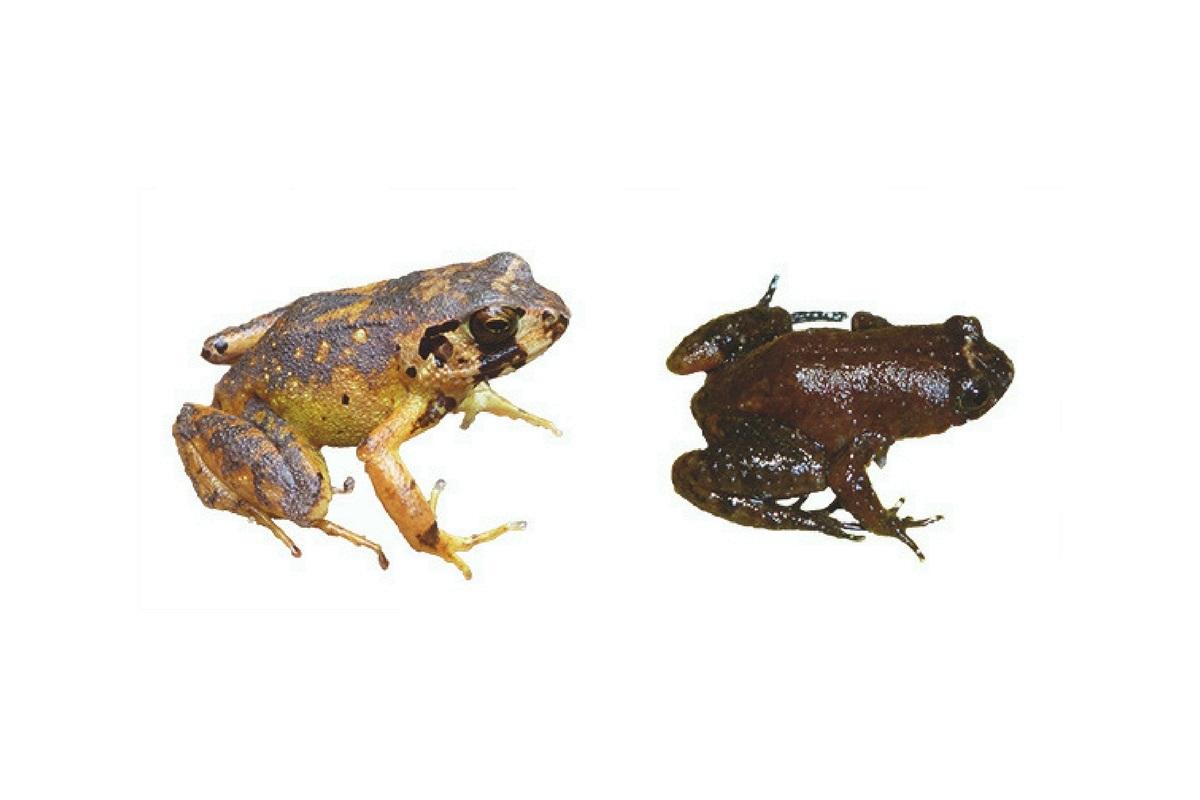Many studies target the threatened species, the losers, but usually nobody cares about the winners, although it is most likely these species which will dominate the globes future ecosystems. Mareike Hirschfeld and Mark-Oliver Rödel from the Museum für Naturkunde Berlin were therefore interested to uncover the reasons for being a successful species in degraded habitats. These findings will help to predict future frog communities and thus identify the species with an increasing effect on ecosystems and their functioning in our human-dominated world.
Tropical forests are the richest terrestrial ecosystems on earth and home to millions of different plant and animal species. At the same time, those regions are the most endangered terrestrial habitats worldwide. They harbour the highest percentage of endemic species and many of them are thus listed as biodiversity hotspots (exceptionally rich but threatened ecosystems). Pristine tropical forests decrease with dramatic speed and often only mosaics of small remnants remain, embedded within agricultural areas and human settlements. This dramatic conversion of pristine forest habitats is a worldwide phenomenon and notably the most important driver of the current biodiversity crisis. Many species of different taxa are declining or even went extinct during the last decades. However, not all species are declining, and some survive successfully or even increase in abundance in these strongly disturbed habitats.
Due to their semi-permeable skin and mostly biphasic life-cycle with aquatic tadpoles and terrestrial adults, amphibians are particularly influenced by their environment. Thus the loss and alteration of their natural habitats, but also the ongoing global climate change are making them highly vulnerable. Although being the most threatened class of vertebrates, not all amphibians disappear in human-altered landscapes. The question is, why do different species respond to environmental change so differently?
Many studies target the threatened species, the losers, but usually nobody cares about the winners, although it is most likely these species which will dominate the globes future ecosystems. Mareike Hirschfeld and Mark-Oliver Rödel from the Museum für Naturkunde Berlin were therefore interested to uncover the reasons for being a successful species in degraded habitats. They used a unique pantropical data set, comprising published records and own data on frog species occurrences in tropical forests, forest fragments and more intense altered landscapes such as plantations or settlements. For these species they gathered life-history (e.g. body size, clutch size) and ecological traits (e.g. preferred habitat) as well as distribution data, which all might influence a species response to forest degradation.
By using a combination of different statistical approaches, they revealed that indirect developing species (species with tadpoles)occurring over large ranges and wide elevational distribution, being further independent of streams, and inhabiting the leaf litter, cope best with modifications of their natural habitats. Species sharing these traits will likely persist in altered tropical forest systems. These findings will help to predict future frog communities and thus identify the species with an increasing effect on ecosystems and their functioning in our human-dominated world.
Original publication:
Hirschfeld & Rödel: What makes a successful species? Traits facilitating survival in altered tropical forests. BMC Ecology 2017 17:25; DOI:10.1186/s12898-017-0135-y
https://bmcecol.biomedcentral.com/articles/10.1186/s12898-017-0135-y
Fig 1: The loss of pristine tropical forests is mostly caused by the conversion of habitat to e.g. agricultural landscapes like rice fields. (c) Mark-Oliver Rödel, Museum für Naturkunde Berlin
Fig 2: Frog species with different forest dependencies. Variable Squeaker Frog (Arthroleptis variabilis, left) is widely distributed, not depending on streams due its direct development, prefers the leaf litter, and is thus according to our results not dependent on pristine forests; Mertens Egg Frog (Leptodactylodon mertensi, right) is in comparison more limited in its distribution, its tadpoles develop in streams, adults live in the leaf litter, and might thus tolerate forest disturbance to some extent. (c) Mareike Hirschfeld, Museum für Naturkunde Berlin
